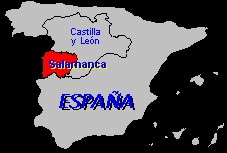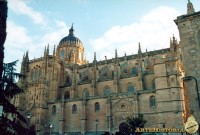HOLY WEEK
Spain is completely transformed during Easter week. Everybody, everywhere, turns out to experience one of Spain’s most traditional events. Don’t miss the chance to come to Spain at this time of year: you’ll be able to share some very special moments.
However, if you’ve never visited Spain during Easter week, then you simply have to come. And even if you already know this famous party, it’s well worth making another trip, as each region of Spain has its own way of celebrating the event.
In Spain, Easter week is celebrated with a great deal of emotion. People take an active role in its events and traditions. All day and night the streets are filled with the beat of the drums, masses of colorful flowers, and the consummate art of religious sculpture.
Easter week is celebrated in every city, town and village in Spain. Nevertheless, there are some cities ( most of them in Andalucía) that are especially well known for their uniqueness and beauty, and have received the International Tourist Interest designation; some of them are:
HOLY WEEK IN SEVILLA
Throughout the city thousands of people lined the streets waiting to catch a glimpse of the processions, each of which takes many hours between leaving its parish and returning there after following a set route around the city. Each of over 50 brotherhoods (cofradías) have two floats.
For the ‘costaleros’ who carry the float it’s a once in a lifetime honor to do so as the numbers wishing to be carriers far outnumber the places available. Unfortunately, there have been some years when heavy rain has caused the cancellation of many processions and grown men were left crying in the streets knowing they would never again get the opportunity to be a ‘costalero’. The floats often weigh over 2000kg and it takes many months of practice before the important day. On average there are 40 ‘costaleros’ per float with each one supporting a weight of around 50kg for around 8 hours.
Following the float, penitents are dressed in capes and “CUCURUCHOS” looking head gear. This hides their identity, the meaning being that God is the only one who knows who they are. Easter week is a religious occasion and the mood of each day’s procession changes from the lighting ones on Palm Sunday to the dark ones of Good Friday which depict the crucifixion of Christ and finally the joyous ones of Easter Sunday which celebrate Christ’s resurrection from the dead.
The Good Friday processions leave churches at midnight and are carried throughout the night with huge crowds following their every step. A particular highlight of note is around 3am when La Macarena, Seville’s most revered Virgin, reaches the official route.
 |
|
| El Cautivo |
 |
| Virgen de la Macarena |
https://www.youtube.com/watch?v=k47BFePixPM Proc. Estrella
“PROCESION DE LOS LEGIONARIOS”: MÁLAGA
At midday on Holy Thursday, the legionaries bring shouldered the “Christ of Mena” from the port of Malaga towards the Church of Santo Domingo. Thousands of people are waiting for hours his entrance. In addition, the armed forces are the one who carry the image just as a symbol of protection.
It is impressive and one of the most exciting moments of the Easter week, since cornets sound while the silence is startling while, in fact, everybody waits for his arrival. Then, after the sound of the “Bridegroom of Death”, Malaga break into applause.
“PROCESION DE LAS TURBAS”: CUENCA
At dawn on Holy Friday, the procession called “Camino Del Calvario” begins which consists of five steps. Nazarenes of all brotherhoods meet to stage through bugles out of tune and noisy drums the taunts that Jesus suffered in his way to the crucifixion.
“LOS SALZILLOS”: MURCIA
On Holy Friday, nine brotherhoods go through the streets as well as an additional parade called the “Promises” formed mainly by devout citizens. This procession is called “Los Salzillos” due to the sculptor Francisco Salzillo, who was the one that built the images during s. XVIII. In addition, they go barefoot the whole procession.
“PROCESION DEL YACENTE”: ZAMORA
This brotherhood was founded in 1941 to worship the image of Christ Recumbent, which had been found abandoned in the Church of the Conception. That said, the procession starts at 23 pm on Holy Thursday. Jesus’ body is simply covered with a shroud and is led to the sepulcher accompanied by brothers in complete silence and a mild drumming.



























